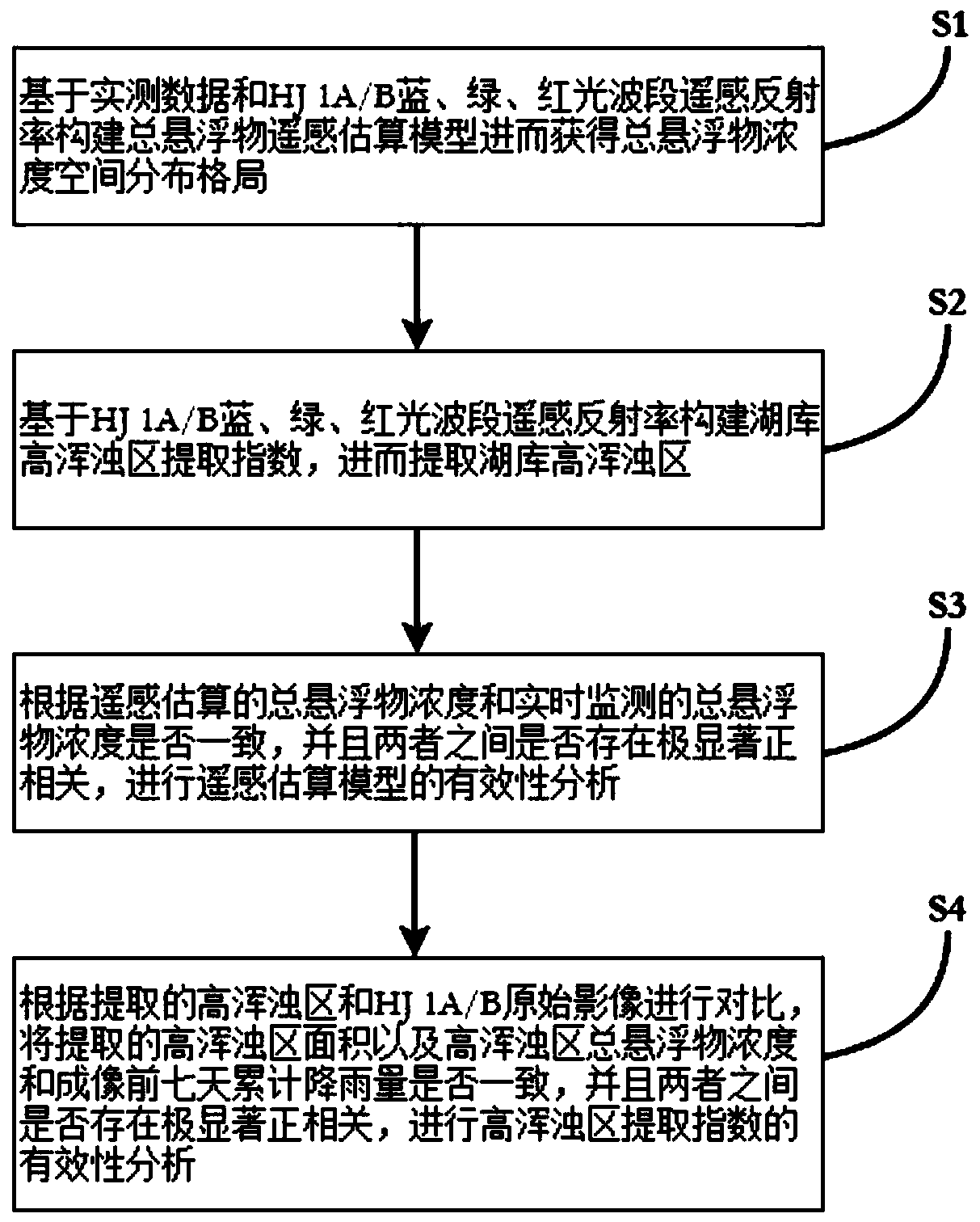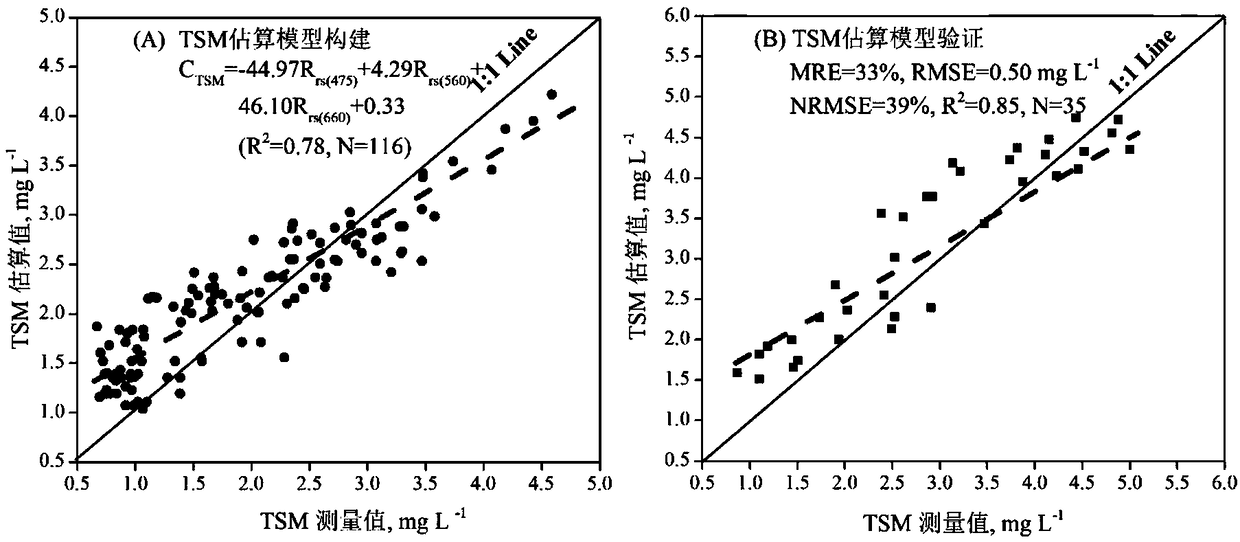Method for performing extraction in high turbidity area of lake or reservoir based on remote sensing image
A remote sensing image and turbidity technology, applied in the field of environmental science and monitoring, can solve problems such as affecting the vertical distribution of water temperature and dissolved oxygen, reducing the vertical mixing rate of water temperature, affecting light transmission, etc. Easy-to-use effects
- Summary
- Abstract
- Description
- Claims
- Application Information
AI Technical Summary
Problems solved by technology
Method used
Image
Examples
Embodiment 1
[0041] Such as figure 1 As shown, the present invention discloses a method for extracting high turbidity areas of lakes and reservoirs based on remote sensing images, which includes:
[0042] S1. Based on the measured data and the remote sensing reflectance of HJ 1A / B blue, green, and red light bands, the remote sensing estimation model of total suspended matter is constructed to obtain the spatial distribution pattern of total suspended matter concentration;
[0043] The construction method of the "Total Suspended Matter Remote Sensing Estimation Model" is as follows:
[0044] Through various forms (single band, band ratio, and multi-band, etc.), the combined operation of the 4-band remote sensing reflectance of the CCD sensor of HJ 1A / B is used as the estimation factor of the total suspended particulate matter concentration, and these factors are analyzed Correlation with total suspended particulate matter concentration. Select the estimating factors that have a good corre...
Embodiment 2
[0060] The present invention will be further described below by taking the deep-water lake Qiandao Lake (the water depth is 38.55±16.01m) as an example. Qiandao Lake is located in the upper reaches of the Qiantang River and is one of the most important sources of drinking water in the Yangtze River Delta. With the development of the economy and the rapid increase in population, the original land in the Qiandao Lake Basin is gradually converted to urban or agricultural land. The water storage capacity is destroyed, and the large surface runoff caused by heavy rainfall will carry a large amount of particulate matter, nutrients, pollutants, and heavy metals into the Xin'anjiang Reservoir, thereby increasing the number and scale of algae outbreaks.
[0061] The required data and information of the inventive method are as follows:
[0062] 1) Meteorological data: Long-term daily rainfall data from Chun'an Meteorological Station in Chun'an County, Hangzhou City, Zhejiang Province fr...
PUM
 Login to View More
Login to View More Abstract
Description
Claims
Application Information
 Login to View More
Login to View More - R&D
- Intellectual Property
- Life Sciences
- Materials
- Tech Scout
- Unparalleled Data Quality
- Higher Quality Content
- 60% Fewer Hallucinations
Browse by: Latest US Patents, China's latest patents, Technical Efficacy Thesaurus, Application Domain, Technology Topic, Popular Technical Reports.
© 2025 PatSnap. All rights reserved.Legal|Privacy policy|Modern Slavery Act Transparency Statement|Sitemap|About US| Contact US: help@patsnap.com



